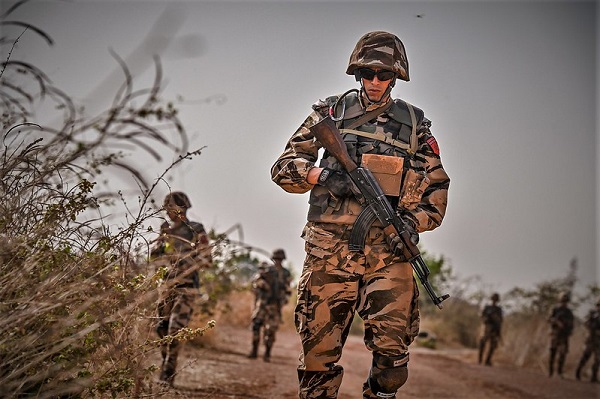The failure of the richest countries to meet their 2009 commitment to provide $100 billion in climate finance to impoverished and climate vulnerable countries has long sowed distrust and hindered climate negotiations.
The broken promise is even more stark, given President Biden’s request to Congress this October for $105 billion additional funding to pay for Israel’s devastating war on Gaza and to support Ukraine against Russia.
Resources that never materialise to address the climate emergency seem to be easily available when it comes to supporting wars. As we approach the UN climate talks in Dubai, the impact of war and the military on the climate can no longer be ignored.
Big emitters
The failure to assess the military contribution to climate change historically is partly deliberate.
The US government in 1997 said it would only sign the Kyoto agreement if the military were explicitly exempted from reporting and reducing emissions.
This exemption was lifted in 2015, but reporting still remains voluntary and limited.
Movement mourns ‘driving force for climate justice’ Saleemul Huq
Yet military jets, ships and tanks are some of the biggest users of fossil fuels. Estimates of global military emissions suggest it makes up to 5.5% of total global emissions, more than double that of the civil aviation sector.
Compared to country emissions, the global military would rank as the fourth biggest polluter, with total emissions bigger than that of Russia.
Funds diverted
Emissions are only part of the picture. As Biden’s recent call for increased military aid to Ukraine and Israel makes clear, military spending also leads to diversion of potential resources from climate action.
Sometimes this happens very directly. In the wake of Russia’s invasion in 2022, the UK government announced that it would shift underspending from its climate finance budget to partially finance a £1bn ($1.2bn) military support package for Ukraine.
China objects to UN fund warnings on solar’s forced labour risks
More often, it’s represented in the way military spending – both for wars and to counter identified long-term strategic ‘threats’ – is consistently prioritised over climate spending.
The result has been rising tensions between major powers such as the US and China and record global military spending, reaching a total of $2.3 trillion in 2022, even while the same countries consistently fail to raise finance to cut emissions and adapt to climate change.
Nato’s target
This looks set to get worse. The world’s largest military alliance, Nato, has committed for all its members to spend at least 2% of GDP on the military.
A recent report by Transnational Institute, StopWapenhandel and Tipping Point North South, Climate Crossfire, reveals that this would lead to a total spending of $11.8 trillion by 2028.
That’s enough to pay for the rich world’s promised $100 billion a year of climate finance for 118 years.
Rooftop solar panels offer fragile lifeline to besieged Gazans
It would also lead to estimated additional military emissions of 467 million tonnes, more than the amount emitted by the United Kingdom in one year. There are efforts to structurally embed these military financing efforts so they are difficult to reverse.
The EU Act in Support of Ammunition Production (ASAP), adopted in July 2023, for example, pushes for measures structurally to ‘reinforc[e] the competitiveness and resilience of the European Defence Technological and Industrial Base (EDTIB) in the field of ammunition and missiles’. The goal is to lock in military spending, which would also lock in carbon emissions for years to come.
Many costs of war
The key winners of this military bonanza are the arms and security companies, whose shares and profits have boomed in the last few years.
They are also using their increased political influence to expand their export markets, including to countries most impacted by climate change. NATO members, for example, export arms to 39 of the 40 world’s most climate vulnerable nations.
These exports fuel conflicts and bolster authoritarian regimes which will only weaken the resilience of communities to deal with the immense costs of climate breakdown.
The terrible human toll of war should be enough to demand peace, but the evidence is growing that war is now also costing us the earth.
Rich nations offer loans not grants for Vietnam’s coal transition
That does not mean changing direction will be easy. Once started, wars tend to polarise opinion and deepen the divide and distrust.
Resolving them often involves addressing deep-seated historical injustices and requires fundamental shifts in foreign policy by major powers like the US and Russia.
However, the clear lesson of the climate crisis is that extreme weather knows no national boundary and does not distinguish by ethnicity or religion. There is no military tank, naval ship or fighter jet that can protect us from climate breakdown.
At Cop28, it is time for the international community to confront the military ‘elephant’ in the room, demand ceasefires, and explore ways to divest from militarism and invest instead in building a planet that is just, peaceful and safe for everyone.
Nick Buxton is the knowledge hub co-ordinator of the Transnational Institute. Deborah Burton is the co-founder of Tipping Point North-South.
